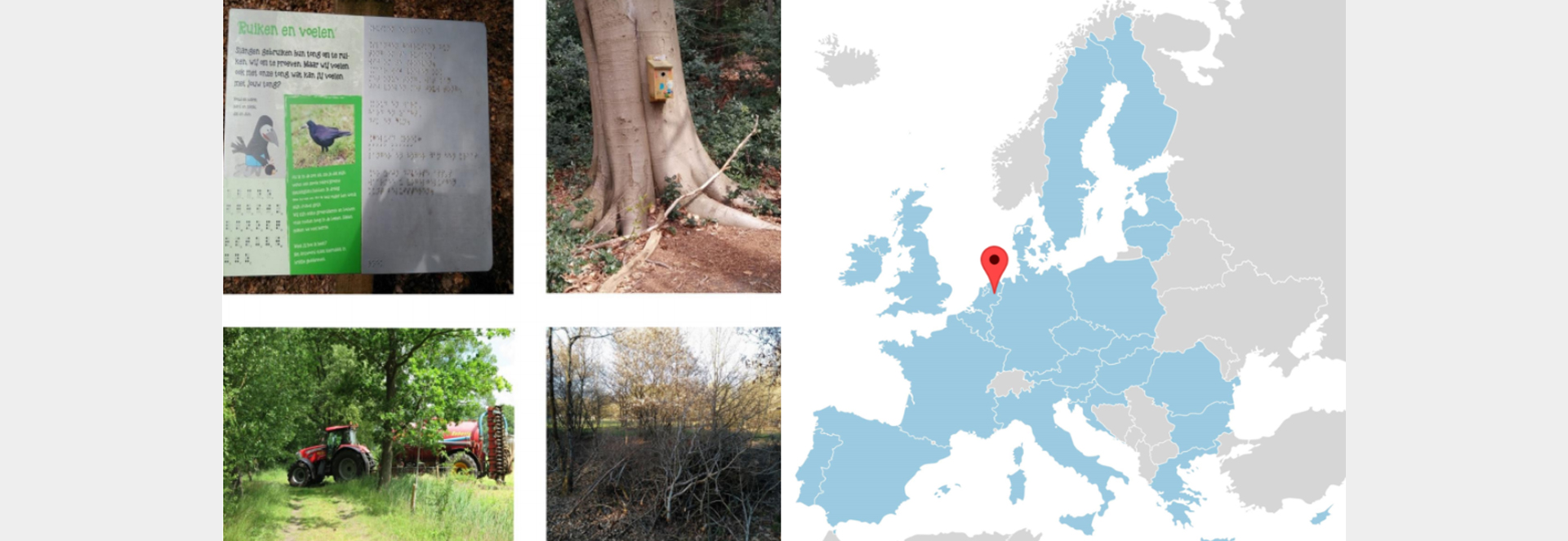

Small elements have been part of the agricultural landscape for a very long time. They provide a habitat for wildlife and a location for biodiversity. Moreover, the elements provide a beautiful landscape as well. Nevertheless, small landscape elements are removed from the land because of agricultural intensification: since 1950 years, the amount of landscape elements has decreased by about 50 per cent 1.
To halt the decrease in small landscape elements, governments have started to provide incentives for farmers to maintain, restore and create small landscape elements in the fields. These measures are divided up into four categories: hedges, trees and bushes, pools and other landscape elements.

A hedge, which can be described as a narrow band of woody vegetation that separates fields, has been part of the agricultural landscape for a very long time. Apart from separating fields, it has several other environmental functions 2. Therefore, it is important that these small ecosystems are maintained.

Trees in agricultural landscape are critical for the ecological value of the countryside. Nevertheless, these landscape elements are declining because of intensified agricultural practices 3. Therefore, several regions provide schemes for farmers to maintain these trees and bushes.

Pools on agricultural land are small and shallow water bodies that hold a community of aquatic organisms. Governments want to maintain these landscape features because of the high benefits for biodiversity they provide 4.

Other landscape elements include traditional stone walls and terraces. Both of these have been in place for a long time, but are currently being removed. Therefore, incentives are provided to maintain these kinds of small scale landscape elements.
⬤ Agri-environmental schemes ⬤ Greening ⬤ Less favoured area payment
| Category | Expected from farmer | Environmental benefits | Price | Examples of regions | Barriers | Opportunities |
|---|---|---|---|---|---|---|
| Hedge ⬤⬤ | Install or maintain hedge |
| 0,125-2,76 EUR/m |
|
|
|
| Trees and bushes ⬤⬤ | Install or maintain trees and bushes in fields |
| 1,25 EUR/tree (Wallonia) or 390-1618 EUR/ha |
|
|
|
| Pools ⬤⬤ | Install or maintain pools |
| 4,1 EUR/m2 (Wales) or 19-106 EUR/pool |
|
|
|
| Other ⬤ ⬤ |
|
|
|
|
|
|
| Terraces |
|
|
|
|

In the Southwest of Drenthe, Netherlands, a project called “Landscape is managed together” is set up. Villagers manage the landscape around the village together with farmers. The village inhabitants decide which management practices will be taken. Volunteers from several local groups help to roll out the project and farmers are consequently subsidized to implement landscape features.
The value of the project lies in the environmental and social benefits it provides. The project encourages the viability of certain species and helps reduce invasive species. Also, the landscape management around the village increases the social cohesion amongst locals. Yet it has to be said that although the use of volunteers in the project cuts a lot of costs, there is no guarantee of continuation of those local groups in the long term.
Source: Geerling-Eiff, F., & Terluin, I. (2016). Case Study. Bottom-up process: local actors involved inn landscape management in Southwest Drenthe (Netherlands). Wageningen, Netherlands.
| What: | Landscape management |
| Location: | Drenthe, Netherlands |
| Duration: | / |
| Area: | 5 municipalities |
| Measures taken: | Planting of
Hiking and biking roads – Forests – Hedgerow – Trees – Riparian strips – Pools – Ditches historical elements |
| Results: | Higher landscape value, better social coherence |